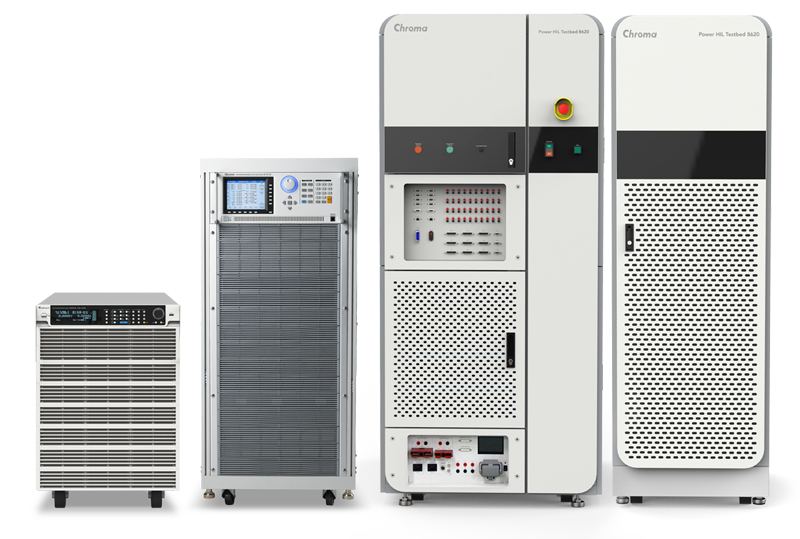Chroma ATE launched the Chroma 8620, a new solution in the field of electric vehicle (EV) powertrain testing. The power hardware-in-the-loop (HIL) testbed is designed for key parts of OBC and DC-DC converters. It supports the ISO 26262 V-model process in the development of road vehicles and can simulate actual vehicle driving conditions and failure modes. The tester so offers even more comprehensive testing of the system's program control process, data, time, security, and other functions.
In traditional vehicle development, it takes a lot of labor, resources, and time to validate the functions of various parts. Failure to adequately test them actually often causes delays in the time new vehicles enter the market. With the expanding requirements for vehicle functional safety testing, especially in ISO 26262, ASILs are used to assess the degree of functional safety that the system must comply with. Chroma 8620 offers efficient testing methods to verify the variety of product functions.
Simulation in the testbed allows for completion of any tests that cannot reasonably be performed in a real vehicle, including communication abnormalities and signal faults. This will ensure that the DC-DC converter and OBC can operate normally when the vehicle is driving or charging, and can safely activate protections when an error occurs. Through the testbed's hazard analysis and risk assessment, users can prevent functional failures that could result in personal injury or vehicle accidents.
Chroma 8620 Power HIL Testbed is able to test components of the charging system and the powertrain system. The new test system especially suits the development and design of OBC and DC-DC converters. The test solution meets the HIL test requirements and can be configured according to DUT specifications. Users not only can use the flexible software to extend the test platform but also build their preferable interface as desired.
In addition to the basic automated test procedures that can be programmed and tested, the testbed can also use fault injection modules and programmable power loads to simulate various abnormalities and failure modes. Besides, users can adopt well-known programming languages such as LabVIEW and Python to simulate comprehensive test conditions on the workbench. Such tests include regulations and standards, UDS diagnostics, communication abnormalities, and signal open/short circuit verification. All in all, the testbed can increase vehicle safety, while reducing the huge expenses incurred in vehicle testing.
Key Advantages
- User interface
Directly monitors and controls parameter changes through the interface during manual testing. Freely adjusts interface configuration according to the user's needs. - Manual & automated tests
Adopts basic manual test functions or automated test programs to quickly conduct large amounts of repeated tests. Automatically generates reports for convenient review of the test process, data, and results. - Model loading
Loads Activate models or Model-Based vehicle models to simulate variations in the environment and increase the diversity in test operation scenarios.

▲Chroma 8620 OBC/DC-DC Converter Power HIL Testbed System
| OBC and DC-DC Converter Power HIL Testbed Chroma 8620 |